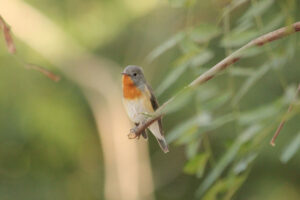Understanding the birdwatching terminologies which are frequently used is important. Let us start with the most basic term ‘Birder’ – A birder is a birdwatcher with bird identification skills and who is well acquainted with the local birding sites.
- Twitching – Twitching is the pursuit and observation of rare birds.
- Transect – In birdwatching a transect consists of birders walking one behind another in a line from point one to another point along a defined path counting the number of birds seen and heard within a certain distance from their path on both sides.
- Lifer – A first ever sighting of a bird species by a birder or an observer generating an addition to one’s life list.
Types
- Nocturnal Birds – Mainly active at night.
- Diurnal Birds- Mainly active during the daytime.
- Crepuscular – Active during the twilight (dawn and dusk)
- Aquatic Birds – Living or growing on or in water.
- Arboreal Birds – Tree-dwelling birds.
- Littoral Birds – Birds found near or on the seashore.
- Terrestrial – Ground-dwelling.
- Feral – Once domesticated but have escaped and adapted to living in the wild.
- Frugivorous – Fruit-eating.
- Granivorous – Grain or seed-eating.
- Passerine – Sparrow-like bird. small to medium sized songbirds – larks, finches, thrushes including swallows, pittas and babblers.
- Raptor – Diurnal bird of prey other than owl. e.g. eagle, hawk etc.
Appearance
- Plumage – Feathering of a bird (Feathers covering a bird’s body).
- Breeding Plumage – As a result from a moult that many birds undergo just prior to the courting or breeding season they get a new plumage during the courtship or breeding season. The breeding (alternate) plumage is commonly brighter than the basic plumage but may also be camouflaging to hide vulnerable incubating birds on the nest.
- Eclipse Plumage – Post-breeding plumage of a bird, when for a short time males resembles females.
- Melanistic – A bird which appear unusually dark due to an excess of the pigment melanin in its plumage.
- Morph – A normal plumage variant of a species within a given population.
- Juvenile – A bird in its first full plumage.
- Subadult – An identifiable stage achieved prior to full adult plumage in species which take several years to attain maturity. e.g. raptors and gulls.
- Zygodactylous – having two toes pointing forward and two pointing back, e.g., as in cuckoos and most woodpeckers. Most other birds have three toes forward ad one pointing back.
Activities
- Preening – Cleaning feathers with the beak.
- Brooding – The general care of unhatched eggs by parent birds (more often by females).
- Contact call: A type of call used by birds for the purpose of letting others of their species know their location.
More terms
- Endemic – Restricted to a given region or country.
- Near-endemic – A species is considered near-endemic if the majority of its range lies within the subcontinent.
- Disjunct – Completely separated distribution range (not overlapping)
- Sympatric – species occurring together in the same areas (overlapping ranges)
Knowing the birdwatching terms is a continual process and more we are into the subject, more we read, more we see, more we interact with other birders we increase our birding vocabulary.




